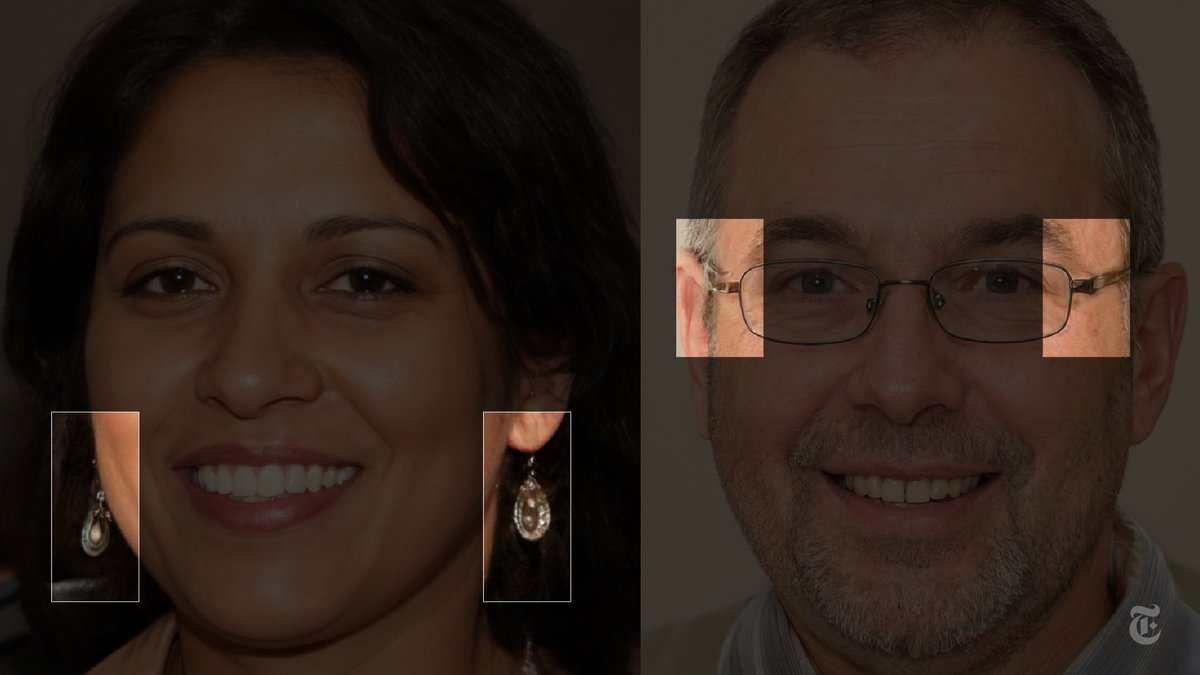Recognize any of these people? From Facebook? Twitter?
These images are not real — they’re from the mind of a computer, and they’re infiltrating the internet.
We set up our own AI system to understand how this technology works. https://nyti.ms/3pPVo0I ">https://nyti.ms/3pPVo0I&q...
These images are not real — they’re from the mind of a computer, and they’re infiltrating the internet.
We set up our own AI system to understand how this technology works. https://nyti.ms/3pPVo0I ">https://nyti.ms/3pPVo0I&q...
They look stunningly real at first, and the technology used to create them is getting better — quickly. https://nyti.ms/3pPVo0I ">https://nyti.ms/3pPVo0I&q...
Artificial intelligence is responsible for these fakes. It trains on photos of real people and tries to make its own, then attempts to detect the flaws. Over time, it learns and keeps getting better.
It will soon be hard to tell online who is real. https://nyti.ms/3pPVo0I ">https://nyti.ms/3pPVo0I&q...
It will soon be hard to tell online who is real. https://nyti.ms/3pPVo0I ">https://nyti.ms/3pPVo0I&q...
There are now businesses that sell fake people, in some cases for $2.99 a face. Want your person to look older or younger? You can easily do that. http://nyti.ms/3pPVo0I ">https://nyti.ms/3pPVo0I&q...
Want to change their mood? You can do that, too. http://nyti.ms/3pPVo0I ">https://nyti.ms/3pPVo0I&q...
You can even change their gender. http://nyti.ms/3pPVo0I ">https://nyti.ms/3pPVo0I&q...
These algorithms are not perfect.
Thanks to underlying bias in the data used to train them, some systems are not as good, for instance, at recognizing people of color.
Even cameras — the eyes of facial-recognition systems — aren& #39;t as good at capturing people with dark skin.
Thanks to underlying bias in the data used to train them, some systems are not as good, for instance, at recognizing people of color.
Even cameras — the eyes of facial-recognition systems — aren& #39;t as good at capturing people with dark skin.
For now, there are ways to detect some common flaws in the people that AI conjures up: earrings that don’t match, a lack of symmetry, or eyeglasses with mismatched end pieces.
Soon, these flaws won’t be so evident, and we’ll have to rely on detection software to see if the person talking to us or writing an online review is real or fake.
See more of what we found. http://nyti.ms/3pPVo0I ">https://nyti.ms/3pPVo0I&q...
See more of what we found. http://nyti.ms/3pPVo0I ">https://nyti.ms/3pPVo0I&q...

 Read on Twitter
Read on Twitter


